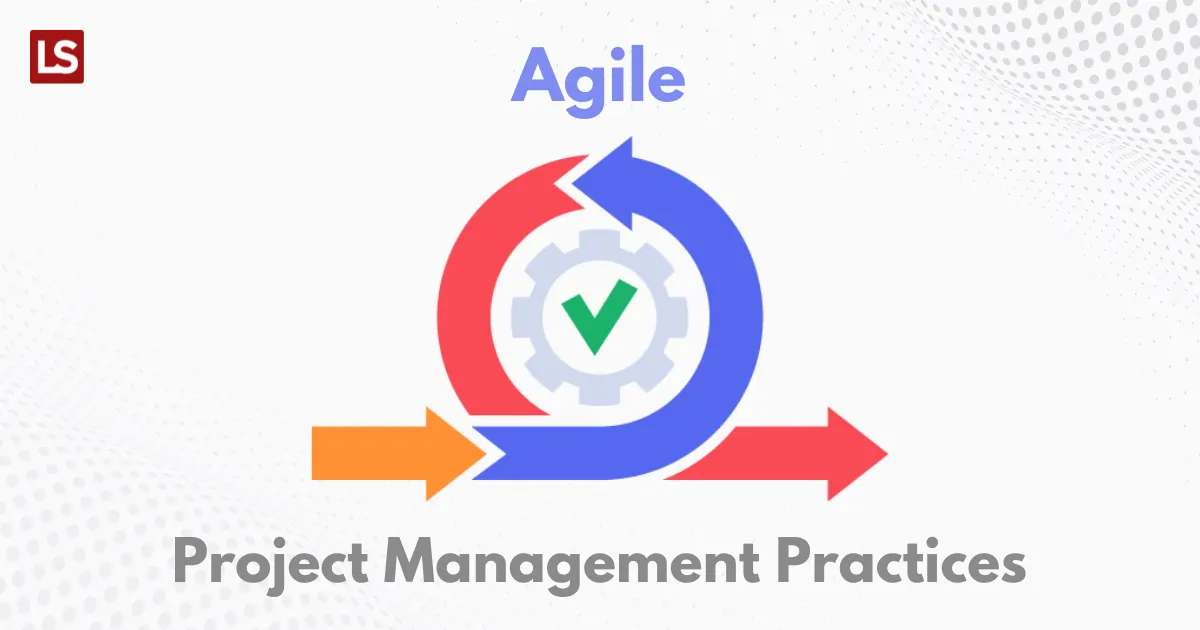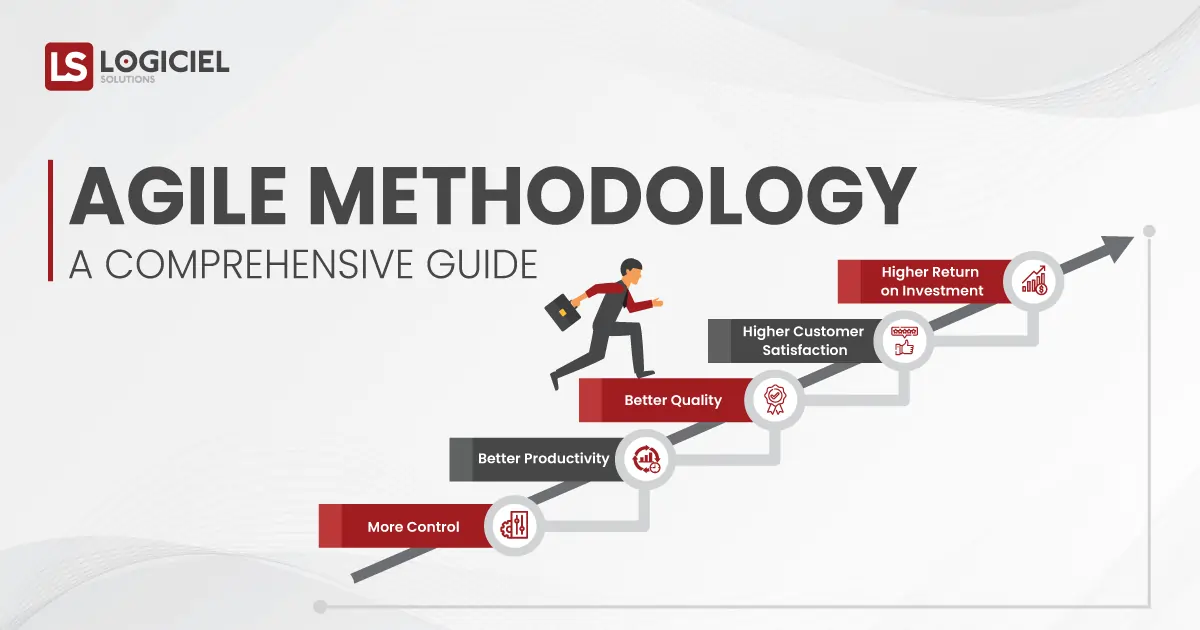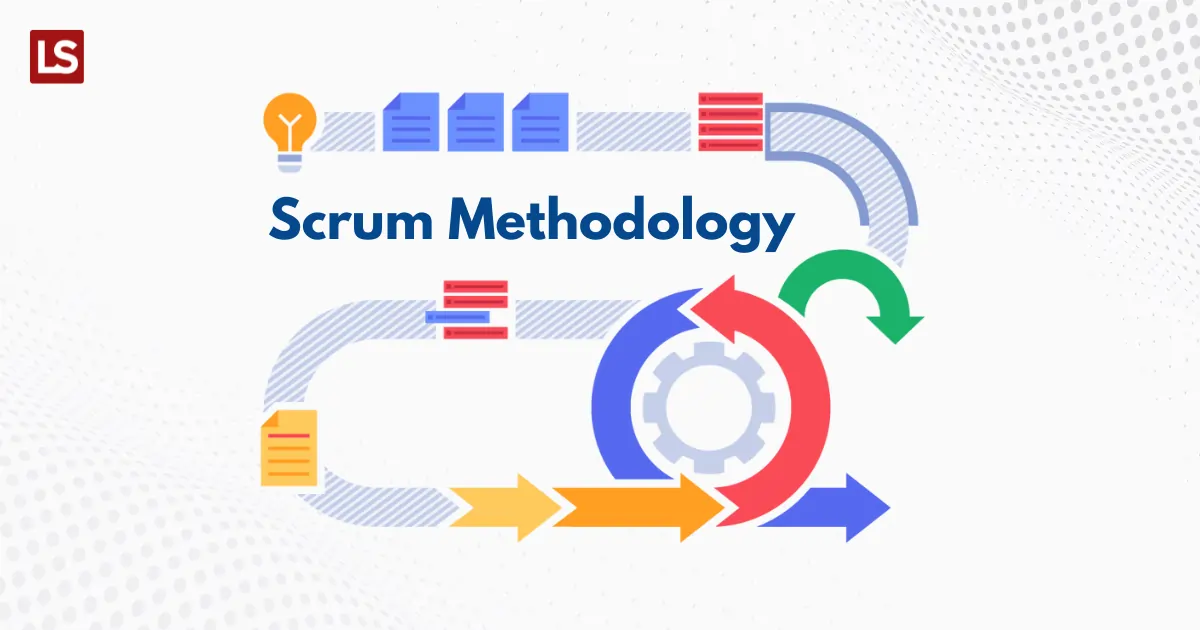There is a huge noise around the benefits agile project management offers but, what exactly is it? Where did it come from? And how is it different from traditional methodology?
Here in this article, you are going to get the answers to these questions and if in case you make up your mind to go with Agile, you can also learn How to do agile project management right with these best practices?
What is Agile Project Management?
Agile is an iterative approach to software development and management. Focusing on frequent value delivery, continuous improvement, the methodology enables your teams to work collaboratively and promptly adapt to the emerging changes of the market while delivering consistent value to stakeholders.
A Brief History of Agile
In the early 1990s, development companies were facing the application development crisis due to the lack of flexibility and adaptability in the development processes with a huge lag time of about three years which means they were taking approx 3 years to make an application ready for deployment. Within this time span of three years, business requirements, customer preferences, technology, and even entire businesses were likely to change hence, most projects were failing.
This is when a team of 17 software professionals came up with the Agile Manifesto and offered the world better ways of developing software and changed how we manage projects today. The document defined the four core values shown in the following image and 12 principles of Agile project management mentioned next to the image:
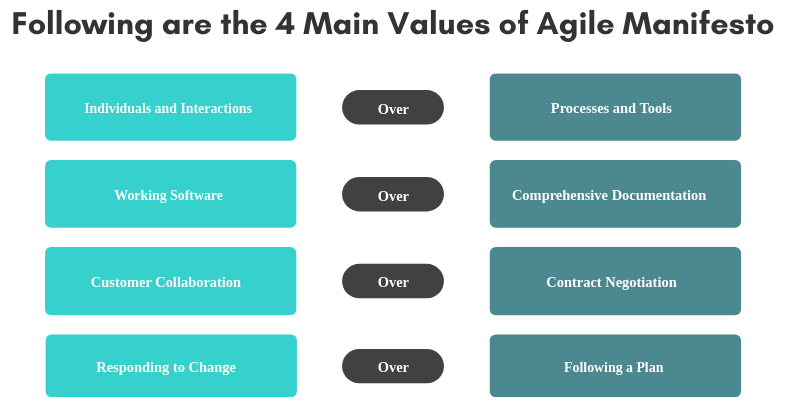
12 Principles of Agile Project Management:
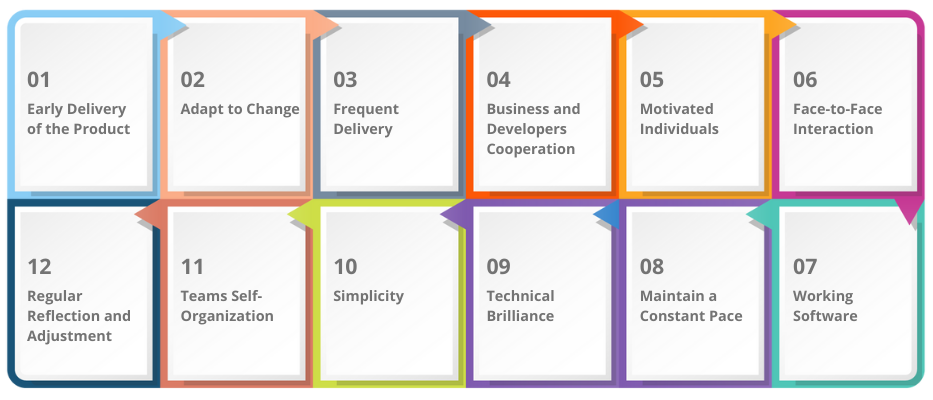
Agile has come a really long way from 2001 and still, it is just the beginning. With its fast-paced and ever-evolving nature, Agile first gained huge popularity in the software development industry and then expanded its reach to different industries searching for a flexible and iterative methodology to embrace continuous improvement and adaptability.
Traditional Vs Agile – A Quick Comparison
Unlike the linear traditional project management focused on an all-inclusive product release with a strict sequential order where it was mandatory to complete each task in order to move on to the next, Agile is an iterative and adaptive project management approach that offers a flexible and multi-dimensional way of working while eliminating the major bottlenecks of the traditional approach like Rigidity and Linearity.
Agile doesn’t use a sequential waterfall-like approach instead, it uses a model that works in small sprints with an iterative and incremental approach. Scalability and adaptability are the key attributes of Agile that handle the uncertain requirements of projects and make it a great fit for the continuously evolving market. The non-linear and flexible working models of Agile set this approach apart from the traditional methodology completely.
The Benefits of Agile Project Management:
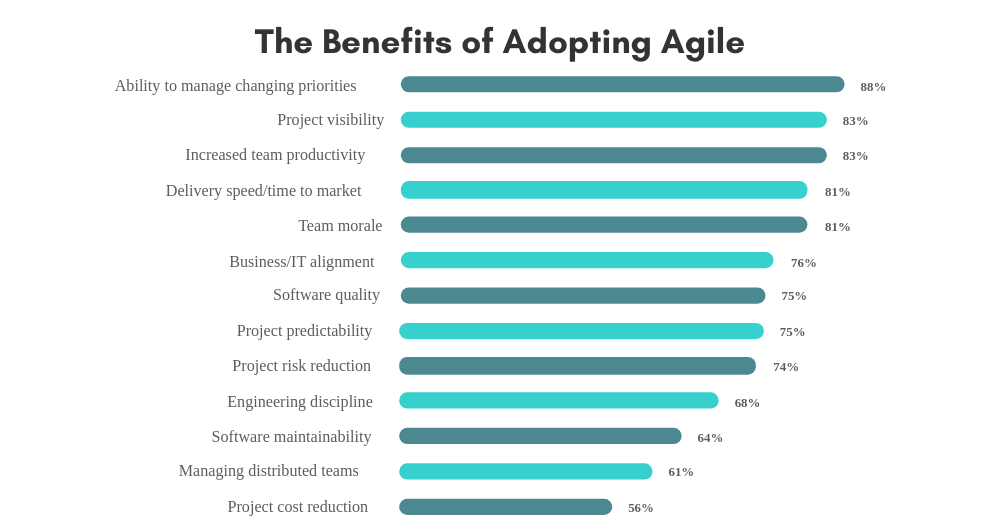
6 Best Practices to Get Agile Right
Create a Clear & Concise Plan for Each Sprint
As planning is not done for the long term in Agile, It is important for you to plan on multiple organizational levels for the short term right from the strategic initiatives to individual tasks.
Be very clear about the deliverables you are supposed to release in each sprint at every level or phase with a clear and concise plan, document, or checklist of requirements. Once a sprint is over and you have presented the result to the client, start the same planning process again for the next sprint while adding the client’s feedback or suggestion.
Don’t Skip Important Meetings
One of the central Agile serving areas is prioritizing value delivery to the customers above outcomes or anything else. Your sprints may have defined goals to perform or achieve but they might change at any point in time with customers’ evolving preferences and expectations. It is so obvious, after all, Agile is designed to meet the uncertain project requirements while satisfying the customer needs. Hence, never forget any important meeting with the client and sharing the status of that meeting with the respective team members. Similarly, have frequent retrospective meetings with your teams to get the solutions to the hiccups and bottlenecks of the process.
Foster Team Collaboration
In Agile It’s important for the project managers to effectively manage team collaboration fostering the work capabilities of the team and individuals. To do so you first need to make sure that your team is well-aligned with the right product vision, workflow, and skillset. Next, you need to ensure they are empowered to be accountable for their collaborative tasks as well as individual responsibilities.
To enhance the sense of belonging among your teams, make sure you involve your team members in all the required project planning sessions and ask them to come up with their own solutions for the emerging challenges. It will help you create more efficient plans with accurate time estimations as every team member will provide you with the right estimation for completing their respective tasks.
Set Up Priority Tasks with Stakeholders
As agile is not a linear process that follows a specific set of defined sequences, you get the flexibility to start with any urgent or important task without completing the ongoing task. This is a nice way to save time but, if you set up the priority tasks at the beginning, you might not have to frequently switch your tasks.
Have a detailed meeting with your client and prepare a list of prioritized tasks that includes all the most important features or functionalities of the product.
Involve BA for Exploring Business Use Cases
To ensure the right requirements are documented correctly and support your project effectively, you can involve a business analyst in your Agile project management.
BAs can make your agile processes more organized and synchronized with determining the exact project requirements, creating action plans including every important detail, defining and managing the provided backlogs by the stakeholders.
Moreover, they can help you implement the relevant business use cases and develop effective user stories with flexible acceptance criteria followed by backlogs prioritization.
Empower a Continuously Improving Mindset
As Agile is focused on continuous process improvement and its goal is to make every iteration better than the last one, you also need to learn and grow with every project you complete. Adapt this amazing practice of Agile and start empowering your team to keep brushing up their skills and mindset to cope with the uncertainty of tools and technologies.
For this, what we do is, we conduct a team meeting after delivering every project and discuss the overall positive and negative aspects of the project like where did we do well, what went wrong and where we had invested maximum time or efforts.
Though we also have meetings at the end of every sprint, this meeting has its own significance as each and every team member contributes some piece of significant information including the pain points of the customer throughout the project, special tricks or techniques to overcome any unusual challenge and the ultimate experience.
This practice helps us to grow our mindset and look at the challenges from different angles and perspectives. And, with this learning, we make sure that we will continue the good work but, not repeat the same mistakes.
Conclusion
These practices are what we follow at Logiciel and it works for us. Try to implement these practices in your agile project management and see how they work for you.

